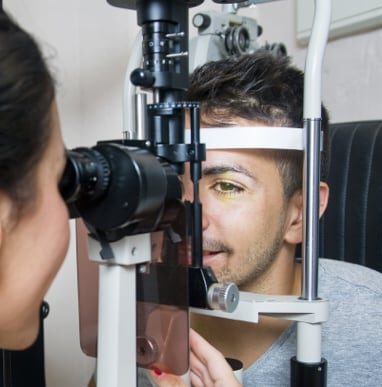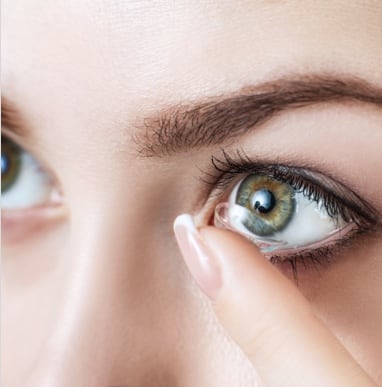
Age-Related Macular Degeneration (AMD) is one of the leading causes of vision loss for people over the age of 50.
In AMD patients, vision loss occurs as the macula deteriorates over time. The macula is the part of the retina responsible for sharp, central vision, AMD can make it difficult or impossible to do daily tasks like reading, writing, and driving.
Who Is At Risk?
Macular degeneration can happen earlier in life, but age is easily the biggest risk factor. A few others include race and genetics. Unfortunately, none of these factors are things we can control, but we can control whether or not we smoke, as smoking is yet another risk factor for AMD.
Symptoms Of AMD
AMD often goes undetected for a long time because it is painless and the negative effects on vision take a while to manifest. Over time, however, blurry patches or dark spots will begin to appear in the central vision. Objects may also appear less bright than they used to, or they may seem warped.
Wet And Dry AMD
AMD cases fall into two main categories: wet and dry. The most common form is dry macular degeneration, accounting for up to 90 percent of people with the condition. Dry AMD happens when the tissues of the macula grow thinner over time, accompanied by fatty deposits of drusin in the retina. The effects of dry AMD tend to be less serious.
The remaining 10 percent of AMD cases will progress to the more dangerous form: wet AMD. This occurs when new blood vessels grow under the retina in an effort to strengthen the blood supply. However, these new vessels are unstable and can leak fluid and scar the macula, resulting in faster and worse vision loss.
Helping Your Eyes Stay Healthy
There is currently no cure for AMD, but there is still a lot we can do to reduce our risk of developing it and slow its progress after diagnosis. The most important thing is to build and maintain healthy habits.
Regular exercise and healthy eating promote whole-body wellness, and that includes eye health. Make sure to include plenty of carrots, fish, leafy greens, and eggs. Wearing UV-blocking sunglasses and avoiding smoking will also help protect your eyes.
The Role Of The Optometrist
In addition to those good habits, scheduling regular eye exams is critical. The earlier we can catch AMD, the more we can do to slow it down. If you’re worried that you could be at risk of AMD and especially if you’ve been experiencing any symptoms, call us or stop by to schedule an appointment right away!












